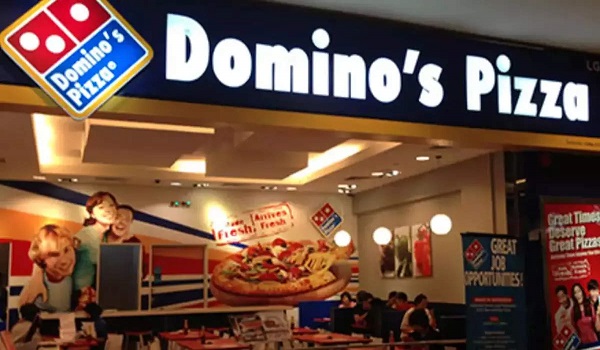In a bid to stay competitive in an evolving pizza market, Domino’s, India’s largest pizza chain, has substantially reduced the prices of its large pizzas. This strategic move comes as smaller and newer rivals, including Tossin, GoPizza from South Korea, Leo’s Pizzeria, MojoPizza, Ovenstory, and La Pino’z, have been making waves in the industry.
This development highlights a broader trend in the fast-moving consumer goods sector, where local players are increasingly challenging established brands and, in some cases, even outpacing them in specific markets. This trend has now extended to quick-service restaurants (QSRs) in India.
Domino’s recently sent messages to its subscribers announcing a significant “epic price drop on large pizzas.” According to the company, the prices of vegetarian large pizzas have been reduced from Rs 799 to Rs 499, while non-vegetarian large pizzas have seen a price drop from Rs 919 to Rs 549. The company’s message to customers emphasized “Pay less, get more.”
Jubilant FoodWorks Ltd (JFL), which operates Domino’s in India through more than 1,800 stores, refrained from providing detailed comments due to the company’s quiet period before quarterly results. However, JFL did mention that the price reduction was part of a promotional offer in September, and the company would assess future strategies based on the offer’s success.
In addition to Domino’s, other well-known Western-style QSR brands, such as Burger King, Pizza Hut, and KFC, have reported slowing sales over the past three quarters. This decline is attributed to intensifying competition from local players and cost-conscious consumers seeking more affordable options.
To counteract this trend, larger brands are reducing prices, introducing products priced 40-60% lower than their existing offerings, and expanding their presence in untapped cities to attract first-time customers.
Pizza Hut, owned by Yum Brands, is focusing on expanding into markets with populations exceeding one million and promoting its lowest-priced product, the flavor fun range, priced at Rs 79, down from Rs 200 previously.
According to industry experts, the proliferation of smaller QSRs can be attributed to their effective cost management, targeted marketing efforts, and active engagement with social media “fan clubs.”
Despite these challenges, established QSR brands are determined to regain their customer traffic and leverage the spending power of Gen Z consumers. The pizza market in India is becoming increasingly crowded, with regional chains accounting for nearly 30% of all outlets. Homegrown brands like La Pino’z have also rapidly expanded their presence.
As consumer discretionary spending faces headwinds in India, QSRs are devising strategies to maintain their market position. Initiatives include introducing value-for-money meal segments and competitive pricing to appeal to cost-conscious consumers. For instance, KFC India introduced a new price point of Rs 99, and Restaurant Brands Asia (RBA) India, which operates Burger King, plans to focus on value-for-money meals starting at Rs 99 in FY24 to establish price leadership in the market.


